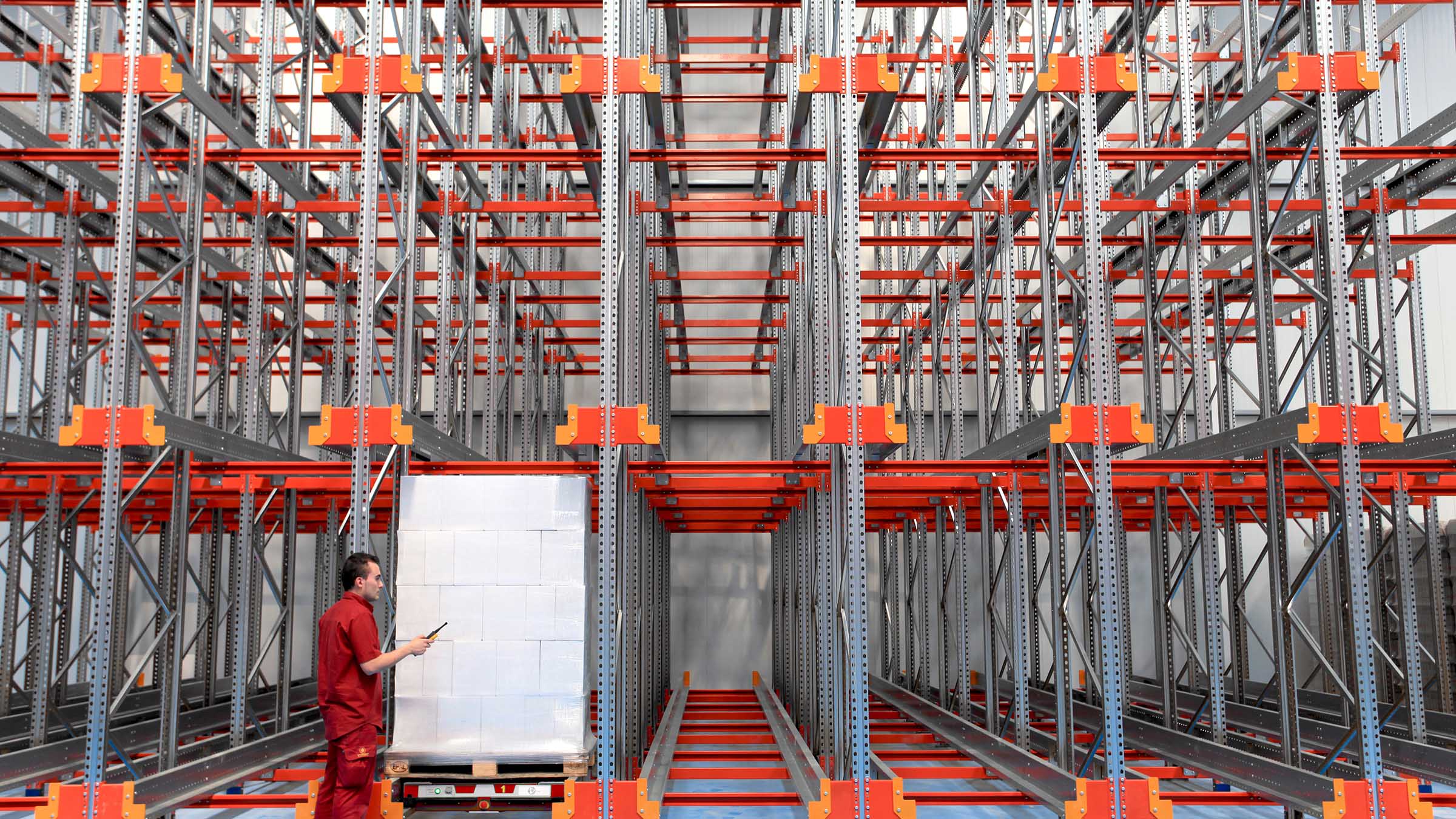Efficient use of space is one of the biggest challenges faced by warehouses in the UK. As stock volumes grow and floor space becomes more valuable, businesses need storage systems that hold more goods without slowing down daily operations. One option that has become increasingly popular is push back racking, a system designed to combine high storage density with easy pallet retrieval.
How push back racking works
Push back racking uses a series of inclined rails and wheeled carts. When a pallet is placed onto the system, it automatically pushes the pallet behind it further back. When the front pallet is removed, the ones behind roll forward into position. This creates a Last-In, First-Out (LIFO) storage method that is ideal for bulk goods with a fast turnover.
The advantages of push back racking
The system offers several key benefits for warehouses:
- Maximised space use: Pallets can be stored several deep, reducing the number of aisles required.
- Improved efficiency: Forklift operators can load and unload from a single aisle, saving time and reducing travel.
- Flexibility: Multiple product lines can be stored in the same racking system, with each lane holding a different SKU.
- Safety: With fewer aisles and less forklift travel, there are fewer opportunities for accidents.
When push back racking is the right choice
Push back racking works best for businesses storing large quantities of the same product, especially where stock rotation is less critical. Food and beverage warehouses, manufacturing facilities, and distribution centres often benefit from the system’s efficiency. However, because it is a LIFO system, it is not the right choice for operations that require strict First-In, First-Out (FIFO) control, such as pharmaceuticals or products with short shelf lives.
Comparing push back racking with other systems
While push back racking offers excellent space efficiency, it is only one option among several. Adjustable pallet racking is often the best choice for businesses that need direct access to every pallet. Drive-in racking can hold even more pallets than push back, but it limits accessibility. Cantilever racking provides a better solution for long or irregular loads like steel or timber. The right choice depends on the balance between density, accessibility, and product type.
Long-term value through careful planning
Like any storage system, push back racking delivers the greatest value when it is planned and maintained properly. A professional design process ensures that pallet weights, building height, and floor capacity are all taken into account. Regular inspections and timely repairs keep the system safe, compliant, and reliable. With these measures in place, push back racking can transform a warehouse, helping businesses store more stock, streamline operations, and reduce the cost pressures that come with limited space.


